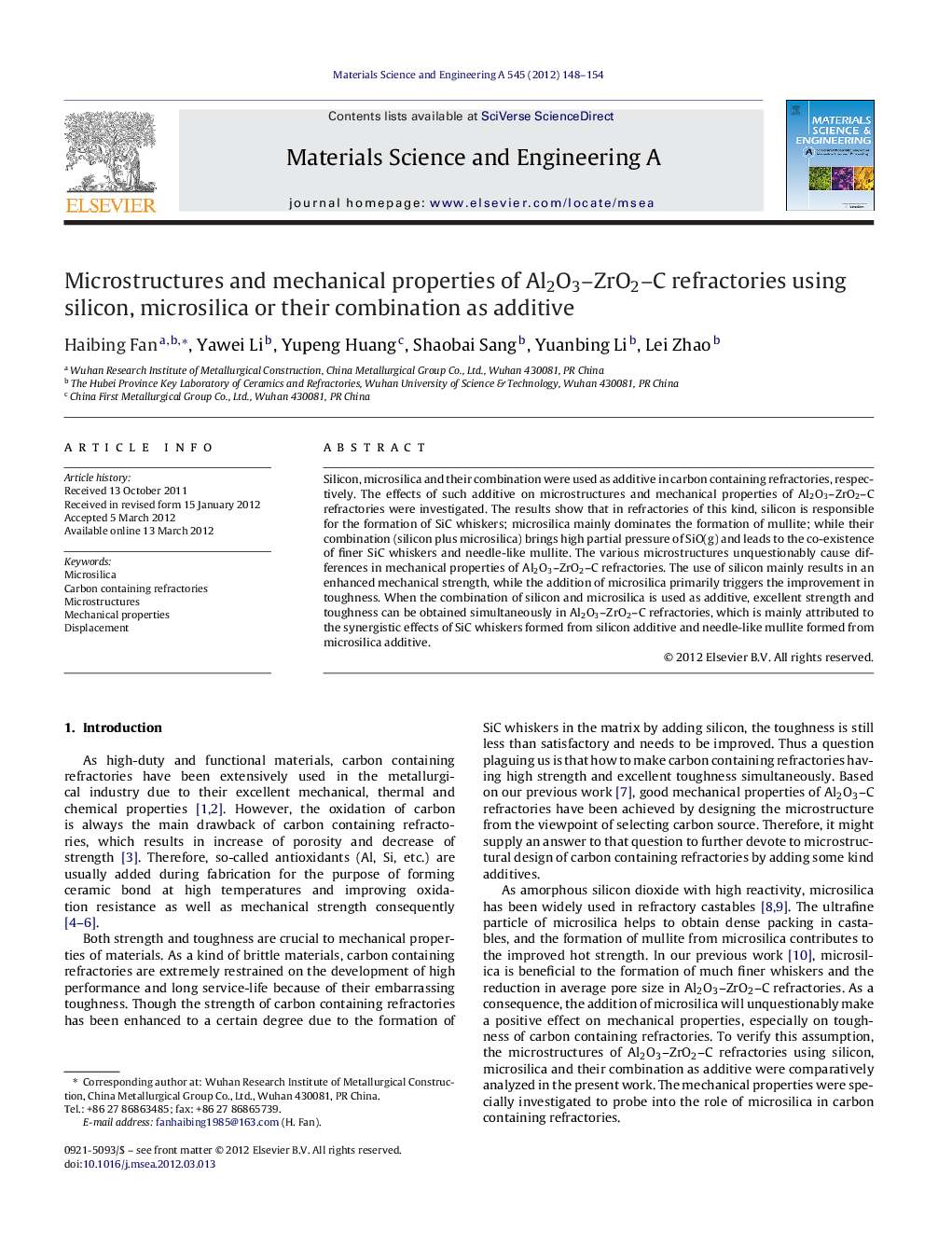| Article ID | Journal | Published Year | Pages | File Type |
|---|---|---|---|---|
| 1577425 | Materials Science and Engineering: A | 2012 | 7 Pages |
Abstract
Silicon, microsilica and their combination were used as additive in carbon containing refractories, respectively. The effects of such additive on microstructures and mechanical properties of Al2O3-ZrO2-C refractories were investigated. The results show that in refractories of this kind, silicon is responsible for the formation of SiC whiskers; microsilica mainly dominates the formation of mullite; while their combination (silicon plus microsilica) brings high partial pressure of SiO(g) and leads to the co-existence of finer SiC whiskers and needle-like mullite. The various microstructures unquestionably cause differences in mechanical properties of Al2O3-ZrO2-C refractories. The use of silicon mainly results in an enhanced mechanical strength, while the addition of microsilica primarily triggers the improvement in toughness. When the combination of silicon and microsilica is used as additive, excellent strength and toughness can be obtained simultaneously in Al2O3-ZrO2-C refractories, which is mainly attributed to the synergistic effects of SiC whiskers formed from silicon additive and needle-like mullite formed from microsilica additive.
Related Topics
Physical Sciences and Engineering
Materials Science
Materials Science (General)
Authors
Haibing Fan, Yawei Li, Yupeng Huang, Shaobai Sang, Yuanbing Li, Lei Zhao,
